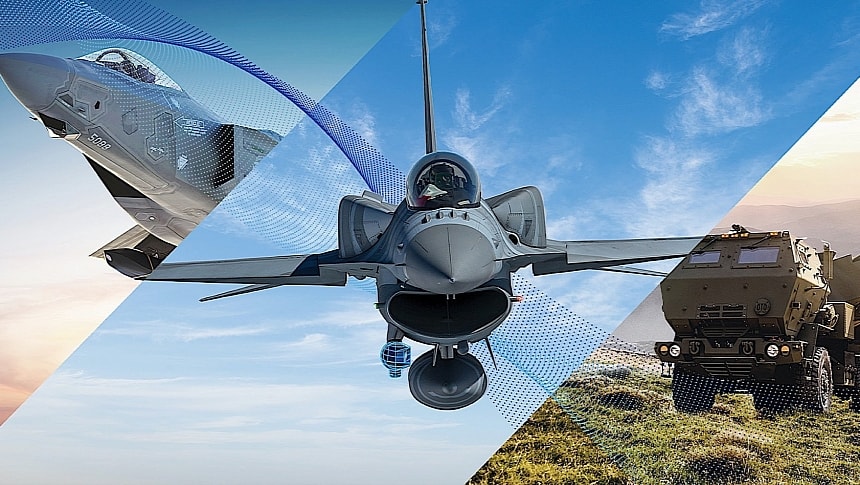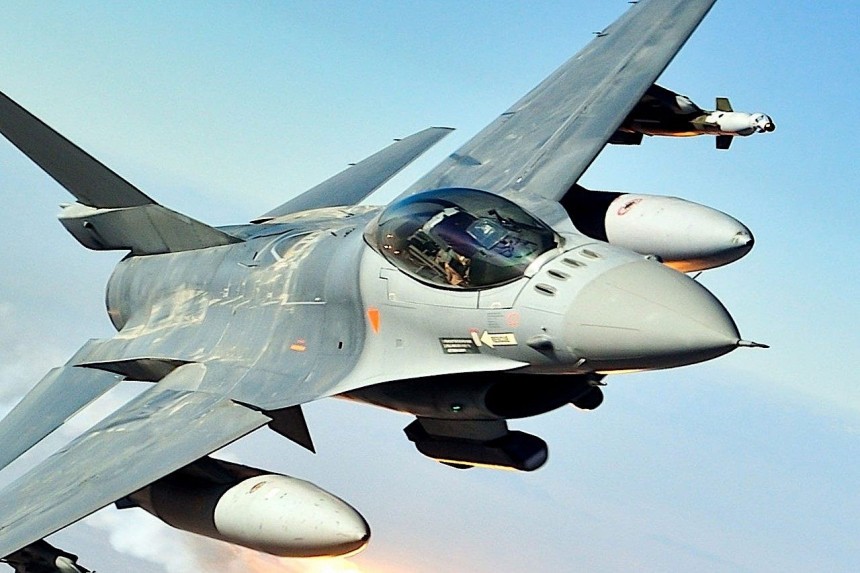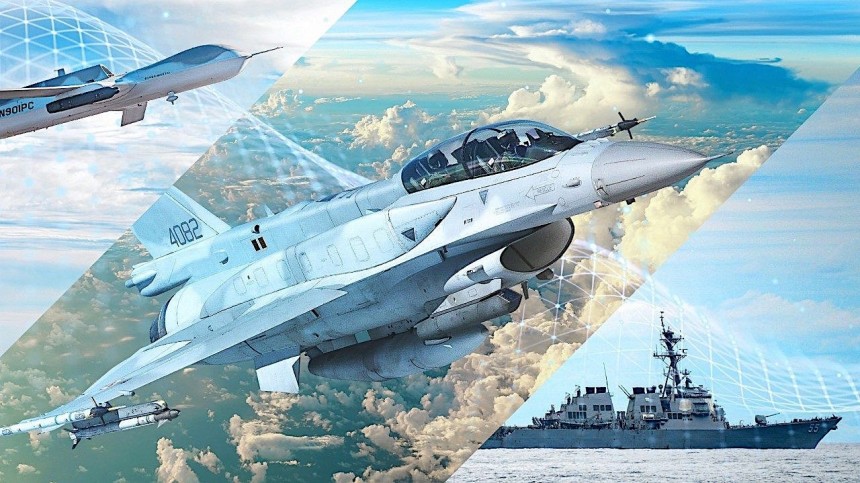The military aviation world is undergoing a massive change these days, with the bulk of the current fourth-generation fighter planes on their way out the door. That's because, modern as they may seem, these things are impressively old, and newer and better platforms are badly needed.
Yet despite the impressive strides made in the research of new platforms, the aging flying weapons systems will still be in use for at least another four decades or so. And that means making them capable of working in sync with newer, fifth-gen jets (and soon enough sixth-gen ones) is crucial.
The era of the fighter jet plane began back in the conflict years of the 1940s with the Messerschmitt Me 262, MiG-9, and Lockheed P-80 Shooting Star. These mostly experimental planes were, if you will, the first generation of the breed, the ones that also helped mankind step into the space age.
They were followed during the years of the Korean War by the likes of the North American F-86 Sabre, MiG-15, and the Dassault MD.454 Mystere IV, planes that not only brought new engine designs but also improved tracking and strike capabilities.
The third generation of the fighter jet family came about in the mid-1950s in the form of the American F-4 Phantom II, Russian MiG-23, and French Mirage F1, among others. These machines became more versatile and took on both fighter and bomber roles, aided by new and improved engines and a new suite of electronics.
Soon after, they were replaced by the fourth generation aircraft, the one largely still in use today, and whose prime examples come in the form of the F-16 Fighting Falcon, F/A-18 Hornet, MiG-29s, Sukhoi Su-30, and Eurofighter Typhoon.
The newest breed of jet planes is the so-called fifth-gen, but there are only four of them doing the rounds in the skies of the world today, namely the F-22 Raptor, the F-35 Lightning, the Chengdu J-20, and the Su-57.
Separately, work is ongoing on two sixth-generation aircraft, the American Next Generation Air Dominance (NGAD) and the European Global Combat Air Program.
With a history spanning six decades, the military planes currently in operation still are fundamentally different from the newer ones, despite the many upgrades they've been subjected to over the years.
And that makes integrating them into a common fighting force that also includes ground hardware pretty difficult. Yet defense contractor Lockheed Martin says it has the tool to do just that: the Sniper Networked Targeting Pod.
Already deployed on fourth-gen fighters, the pod, whose main element is an electro-optical sensor system, is a sort of add-on that allows an aircraft to share data about targets and threats with other planes. It connects aircraft and other military gear by means of a datalink that works at 5G speeds.
As of now, thanks to something described as an innovation, the more modern F-35s, as well as artillery, are being brought into the loop.
In a nutshell, the pod was transformed into an "edge communications and computing node" that will integrate F-35s, F-16s, ground-based artillery systems (HIMARS, MRLS, and European mobile rocket launchers) into a single network that shares data and surveillance on the target among its members.
This approach should allow ground-based artillery systems to receive a continuous and reliable stream of data from aircraft flying overhead, and that, in turn, should improve the precision of the strikes, even if the target changes position. Simply put, fighter planes turn into forward observers for both other planes and ground troops.
The new capability of the Sniper Networked Targeting Pod was announced by Lockheed Martin at the Farnborough Airshow in the UK. We are told the tech has already been subjected to a number of tests using HIMARS and GMLRS, but more complex flight testing and live missile shots are still required.
It's unclear how long these tests will last and when the improved Sniper pod will be ready for integration in NATO airplanes. Whenever that will be, upgrading fourth-gens and fitting fifth-gens with the system should not be all that difficult - that's because the Sniper is a plug-and-play type of pod that can be attached to the exterior of the aircraft.
The Sniper, in its previous configuration, is already deployed on a large number of F-16s and pretty much all other kinds of fighter jets flying in the skies of Europe right now. Together with the pods installed on American aircraft (there are about 2,000 of them in operation today), the Sniper already has over four million combined operational hours that were spent fighting and performing intelligence, surveillance, and reconnaissance (ISR) missions.
Seeing that the Sniper can be adapted to connect significantly different weapons platforms, Lockheed Martin is now looking to the next evolution of the pod. More specifically, it plans on using it to connect other of the systems it makes, including the SkyKeeper air-defense system and the hypersonic Mako missile.
The era of the fighter jet plane began back in the conflict years of the 1940s with the Messerschmitt Me 262, MiG-9, and Lockheed P-80 Shooting Star. These mostly experimental planes were, if you will, the first generation of the breed, the ones that also helped mankind step into the space age.
They were followed during the years of the Korean War by the likes of the North American F-86 Sabre, MiG-15, and the Dassault MD.454 Mystere IV, planes that not only brought new engine designs but also improved tracking and strike capabilities.
The third generation of the fighter jet family came about in the mid-1950s in the form of the American F-4 Phantom II, Russian MiG-23, and French Mirage F1, among others. These machines became more versatile and took on both fighter and bomber roles, aided by new and improved engines and a new suite of electronics.
Soon after, they were replaced by the fourth generation aircraft, the one largely still in use today, and whose prime examples come in the form of the F-16 Fighting Falcon, F/A-18 Hornet, MiG-29s, Sukhoi Su-30, and Eurofighter Typhoon.
Separately, work is ongoing on two sixth-generation aircraft, the American Next Generation Air Dominance (NGAD) and the European Global Combat Air Program.
With a history spanning six decades, the military planes currently in operation still are fundamentally different from the newer ones, despite the many upgrades they've been subjected to over the years.
And that makes integrating them into a common fighting force that also includes ground hardware pretty difficult. Yet defense contractor Lockheed Martin says it has the tool to do just that: the Sniper Networked Targeting Pod.
Already deployed on fourth-gen fighters, the pod, whose main element is an electro-optical sensor system, is a sort of add-on that allows an aircraft to share data about targets and threats with other planes. It connects aircraft and other military gear by means of a datalink that works at 5G speeds.
As of now, thanks to something described as an innovation, the more modern F-35s, as well as artillery, are being brought into the loop.
In a nutshell, the pod was transformed into an "edge communications and computing node" that will integrate F-35s, F-16s, ground-based artillery systems (HIMARS, MRLS, and European mobile rocket launchers) into a single network that shares data and surveillance on the target among its members.
The new capability of the Sniper Networked Targeting Pod was announced by Lockheed Martin at the Farnborough Airshow in the UK. We are told the tech has already been subjected to a number of tests using HIMARS and GMLRS, but more complex flight testing and live missile shots are still required.
It's unclear how long these tests will last and when the improved Sniper pod will be ready for integration in NATO airplanes. Whenever that will be, upgrading fourth-gens and fitting fifth-gens with the system should not be all that difficult - that's because the Sniper is a plug-and-play type of pod that can be attached to the exterior of the aircraft.
The Sniper, in its previous configuration, is already deployed on a large number of F-16s and pretty much all other kinds of fighter jets flying in the skies of Europe right now. Together with the pods installed on American aircraft (there are about 2,000 of them in operation today), the Sniper already has over four million combined operational hours that were spent fighting and performing intelligence, surveillance, and reconnaissance (ISR) missions.
Seeing that the Sniper can be adapted to connect significantly different weapons platforms, Lockheed Martin is now looking to the next evolution of the pod. More specifically, it plans on using it to connect other of the systems it makes, including the SkyKeeper air-defense system and the hypersonic Mako missile.








